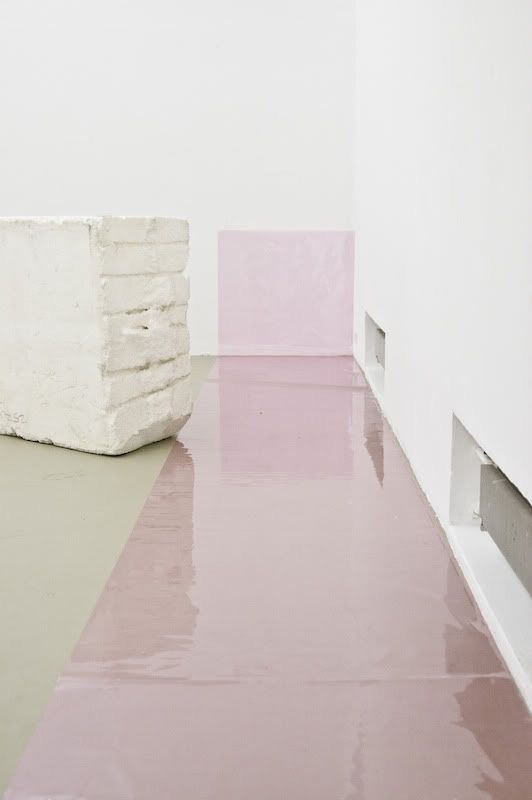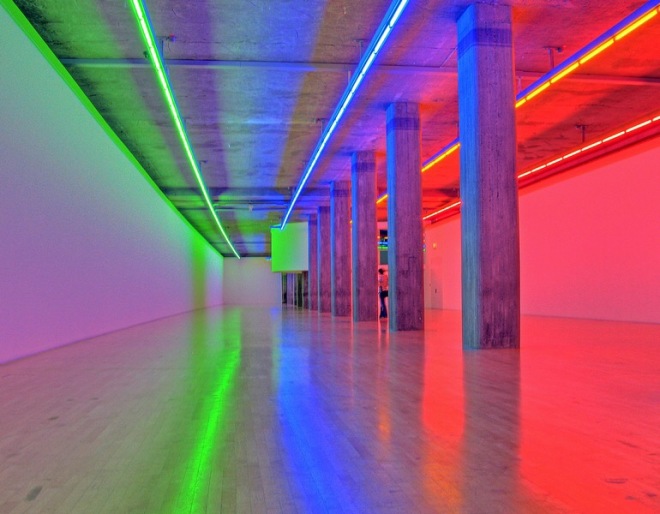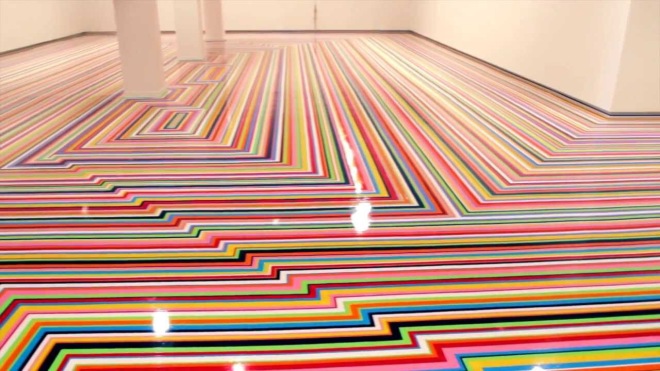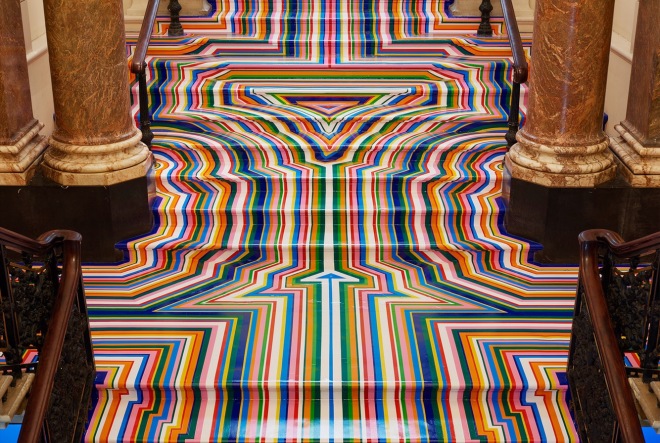Peter Zimmermann is a German painter, sculptor, object artist and university professor.
Zimmermann creates colour scapes with paint and layers of resin to create a liquid movement effect. I am mostly interested in the floor he creates when exhibiting his work. The way the colours flow into one and other seamlessly. As I want to make a coloured reflective floor for my installation piece, I feel looking at works like this inspire me and give me ideas of the kind of finish that I was to achieve. Although I don’t want the floor to be the main feature of my installation but more of an enhancement to add to the piece.
Peter Zimmermann: Schule von Freiburg (2016)





















